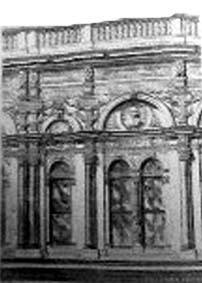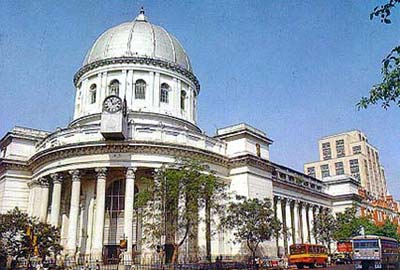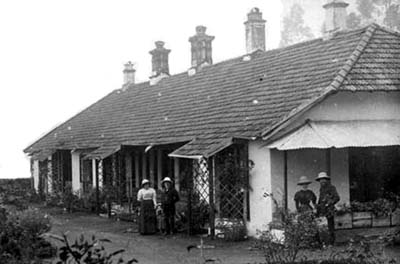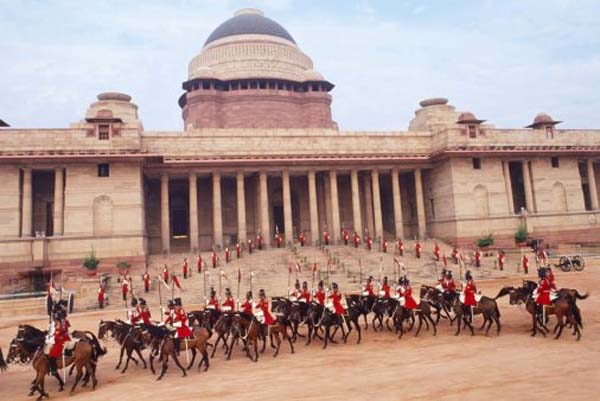Apr 27, 2025
Apr 27, 2025
by Sonam Gupta
India has been invaded ever since the times of Aryans repeatedly, the invaders almost always attracted by richness of its resources and natural bounties or by the heritage and glory of an already flourishing reign. The Europeans also were no exception to this fact; European interest in India persisted since the classical times and for very cogent reasons. India had much to give Europe in the practical form of spices, textiles and other oriental products.1
That probably was the reason of all the expeditions from Vasco da Gamma in 1498, the Dutch in 1590, to the east India Company in 1600.
The Europeans extended their sovereignty over the Indian continent, post industrial revolution, to seek profits by exploring new markets for their products, which now had a lesser market in the area where ‘industrial revolution originated’. Besides, obtain the required resources be it the raw material or absolutely inexpensive labor.
Amongst the many countries setting up colonies in India, ‘the British’, though not the first but definitely, in the long run were the most powerful one. Following a trajectory similar to the Dutch, and used the Dutch techniques, later in time, with more spectacular results. The ascendancy falls into five phases that begin roughly in 1600, 1740, 1792, 1820 and 1848, the shape and substance of ‘British India’ changed dramatically.2 The British formed ‘East India Company’ on “31st December 1600” 3, of the knights and merchants of the city of London and Queen Elizabeth I granted its royal monopoly charter. It flourished in the same up–and–down manner as other commercial operations, like those of the French, Dutch, and older merchant communities who worked under the authority of the Mughals and their contemporaries.
But the British fought against the Dutch, progressed gaining territorial powers by military control to increase their control over assets in the interiors to the extent that by around 1784 William Pitt’s India act made the company an autonomous body. This act decried territorial expansion which accelerated imperial expansion and with the British military aristocracy taking charge of the company armies, a lot of regions were conquered, Delhi (1803) being one of those. Along with these achievements treaties were signed with the ‘princely states’ and Ajmer and Mewar became directly administered British territory. By 1813, the parliament opened British India to private merchants and missionaries. As the power increased Indian affairs were controlled directly by crown and parliament and now British citizens could operate in India under the crown protection in company territories called ‘presidencies’, with their capitals at Bombay, Calcutta, and Madras. 2
The Indian families’ were pushed out of the market, the British silver rupee became the imperial currency and thus the value of Indian goods kept decreasing by folds for the next thirty years. By 1833, the company’s trading rights ended completely making it strictly an arm of British administration and as consequence India became part of the larger “British Order”. With India becoming part of the order many a changes were made for instance – English becoming the official language, commercial networks entailing deeper controls of Indian resources, and the drive which began in 1830 materialized by almost 1848 to bring the hills also under the British conquest.
The British India – The Multiplicity of Motives Become Visible:
| Britain viewed the people of India as second-class citizens in their own country, working to build an infrastructure that fed India's natural resources to England while depriving the indigenous population opportunities to enjoy the fruits of their labor. 4 The Hindustan, under the sway of the British Empire, was despotism – complete deprivation of freedom.
Though, the 1850s witnessed the introduction of the three "engines of social improvement" that heightened the British illusion of permanence in India. They were the railroads, the telegraph, and the Uniform postal service, but it was primarily to serve the British and not for the development of the natives. 5 |
|
The Colonial Culture Reflecting In the Architecture:
The infrastructure in India without the giving of the industrial revolution was negligible for the British, as mentioned above; the developments were for the colonizers and not for the ruled, the architectural manifestations also had a colonial aim of representation. Representation of power, supremacy and yet somewhere, even in their own dilemma, a way to connect to the masses of the colonized Indians and symbolize their blatancy of rule.
 The architectural undertakings in the colonial empire also just like in their own nation, politically driven, had different needs to subside to. For instance, the colonial and India office buildings in white hall, in fact, themselves indicated something of the distinctive character of empire. Both structures, designed by Scott and aligned with the Foreign Office, were classical in their architectural form. Most revealing, however, was their sculptural ornamentation. The topmost story of the Foreign Office was decorated with a series of sculpted figures emblematic of different countries, such as France and Italy. Similar figures set on the India Office, however, represented not the nations but “Indian tribes”, an afghan, a goorkha, a Malay, a Maharatt, and so on”, social categories identified by the British as significant for their rule of the sub continent. While the inner court of the foreign office was plain, that of Indian Office was decorated with busts and statues of” celebrated worthies, both civil and military, connected with the Indian empire.”6
The architectural undertakings in the colonial empire also just like in their own nation, politically driven, had different needs to subside to. For instance, the colonial and India office buildings in white hall, in fact, themselves indicated something of the distinctive character of empire. Both structures, designed by Scott and aligned with the Foreign Office, were classical in their architectural form. Most revealing, however, was their sculptural ornamentation. The topmost story of the Foreign Office was decorated with a series of sculpted figures emblematic of different countries, such as France and Italy. Similar figures set on the India Office, however, represented not the nations but “Indian tribes”, an afghan, a goorkha, a Malay, a Maharatt, and so on”, social categories identified by the British as significant for their rule of the sub continent. While the inner court of the foreign office was plain, that of Indian Office was decorated with busts and statues of” celebrated worthies, both civil and military, connected with the Indian empire.”6

British architects who worked in the empire, regardless of their choice, shared a set of attitudes very different from their colleagues’ home. Their views together formed the colonial style, which more or less were inflicted with a concern of making visible Britain’s imperial position as ruler. Since, the British thought process was based on the allegory that, “to know was, in some measure, already to rule”, hence the imperial architecture was – “architecture both of knowledge and of power.”6
With his Calcutta General Post Office, Walter Cranville fused the Classical and Baroque.
It is probably for the thought that, T. Roger Smith stated, “The great peculiarity of a tropical climate is that it is very hot…and that is one point an architect must never forget.”
Innovation did not stop here.
The Thought Materializing Together
with the Imperial Apparition of Pre-Eminence:
 The Indians had of course over the centuries developed ways to accommodate the country’s climate in their building and the English men even with full realization of the fact did not adopt the same means but set their work different from that of the Indians. To satisfy those imperial whims were adopted the bungalow form, which ideally combined the climate and political fantasies – ‘of social distinction’.
The Indians had of course over the centuries developed ways to accommodate the country’s climate in their building and the English men even with full realization of the fact did not adopt the same means but set their work different from that of the Indians. To satisfy those imperial whims were adopted the bungalow form, which ideally combined the climate and political fantasies – ‘of social distinction’.
Early Colonial Bungalow (Sanatarium in Kinnur)
Though this expression and culture of colonialism did not confine only to the architectural manifestations like the bungalow or other public buildings but it was prominently visible at the urban level in the form of many settlements.
The Demarcations And The Results
These settlements probably borne out of some kind of a racist fear, as the British created separately demarcated spaces for themselves. In cities these areas were labeled ‘civil lines’, with associated ‘cantonments’ for the military, in mountains they established ‘hill stations’ that served as summer refuges not only for individuals but for the colonial governments. The building of these areas went hand in hand with a increased number both of settled families, their presence made easier by improved communications of the day, and of British military personnel. These spaces communicated racial difference as well as the threatening disorder and ‘putrid air’ understood to characterize the old cities. They represented, moreover, as part of lived experience, an association of British culture with ‘modern’ in contrast to the older sections of the city seen as ‘medieval ‘ or ‘traditional’ – always the necessary foil to modernity. The ‘colonial city’ was predicated on such duality. 3
Though at the urban level there was a concern about the break down in sanitation, and alarming diseases and epidemics. Drainage, removal of refuse, safe water supply, were the remedies thought but whatever measures were taken at the urban development level were in to the English privilege. In fact, one of the earliest, “sanitary concerns focused on the military, whose poor health was evident from the fact that more soldiers died from diseases than from the battle.
The city of Allahabad, capital of the United Province, is a classic example of the way health and safety drove urban design. One of the most celebrate pilgrimage places, its population varied tremendously along the course of the year. The British feared itinerancy in all forms so that Allahabad seemed a particularly dangerous site for health and safety. The old city had two or three main streets, but from these a labyrinth – as the British saw it – of narrow streets led off to distinct neighborhoods, some still with gates fastened at night. The houses mixed together with shops and warehouses, looked inwards and were densely built. With the establishments of sanitary commissions and municipal councils, efforts were made to improve sanitation in the old city, but resources were disproportionately directed towards the European areas.
Here, to just like in the case of Delhi, rail line was strategically used as the defence for European population, and so it ran through the city forming a barrier between the civil lines and the areas inhabited by the native population.
Apart The Records ...
All of these facts have been penned down over a certain period of time but what is left for direct observation, also though matches many of those writings, are the great works of architecture, the existent pattern of education, and much of the planning aspects in almost every part of our free nation. Along with probably, their thought process which we have banked upon or were adapted to and have not been able to grow out of. The thought process, of ultimate grandeur and one worth a flaunt, is eminent in the buildings left by the English on the land, which was alien to them but are well suited to the context of our nation. The context -be it of the climate, the psychology of the masses or the understanding and appreciation of the already existent wonders for creations of our history, owing to which was given birth to the “indo-saracenic” style of architecture, by far outstands the way we incorporate these elements integral to the constructional legacy of any realm and its populace.

Viceroy’s lodge: built in the new city of British capital, Delhi
Even after decades of freeing ourselves of a foreign rule, we have not been able to surpass the magnificence and opulence reflective in the undertakings of the ‘foreigners’. The splendor of those accomplishments still speaks of the by-gone era where we were each day made to realize that, we even with huge resources and bounties, “are inferior”. If that is not “incorrect”, What was it that we wanted to free ourselves of and Have we actually been able to liberate ourselves form that rule? Are we actually “now” an independent nation and not a “colony”?
References :
19-Jul-2009
More by : Sonam Gupta

|
I am a scholar of Manipal university. This article giving correct picture of the styles and characteristic features of the British architecture in India. This is useful to me. sumana s pai |

|